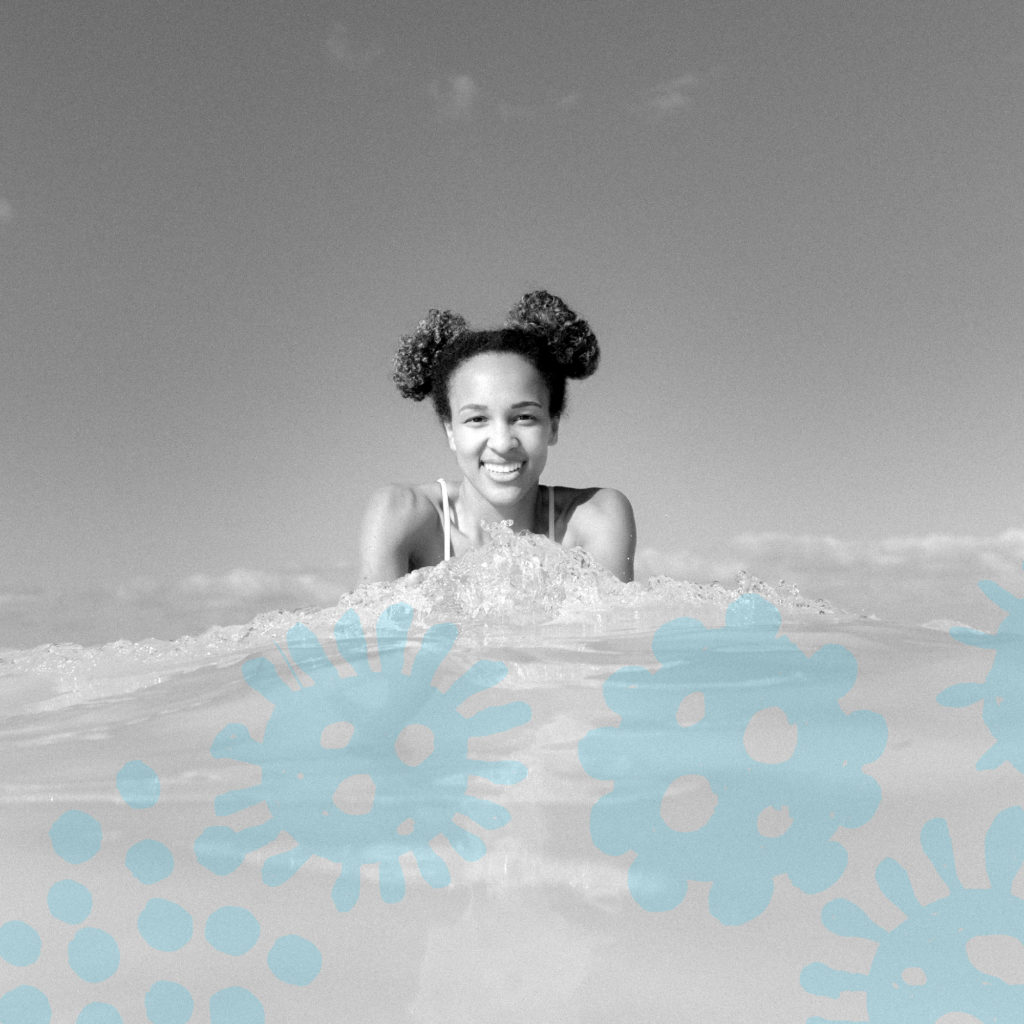Mother Dirt is one of the most notable brands on the market that targets the skin microbiome. It has managed to tackle a notoriously difficult challenge: bottling live bacteria. This live bacteria helps restore the “peace keeper” bacteria that we have cleaned away through our modern lifestyles, and the Mother Dirt product range – including AO+ MIST Live Probiotic Spray– has been carefully designed to bring consumers a basic set of daily essentials and personal care products, formulated to be friendly to our skin microbiome.
We recently spoke to Jasmina Aganovic, the brand founder and President of Mother Dirt, to discuss the brands journey to date, the challenges of bringing a new skin-based microbiome product to market and her take on the skin microbiome and what this means for consumers.
Mother Dirt was one of the first companies that truly targeted the skin microbiome when the concept and awareness was extremely new. What was the public perception, or reaction, to the thought of putting live bacteria on their skin?
When we launched in 2015, we knew we were ahead of the curve. Working in this field, and working with a group of scientists, we were cognisant that the skin microbiome was a new concept for consumers.
We wanted to change the conversation with the public around bacteria. We are all so used to hearing about bacteria in a negative light – it’s dirty, spreads germs and causes disease and infection – so telling people to put live bacteria on their face, for the benefit of their skin and wellbeing, was certainly novel.
The beta tests of the Mother Dirt product had success with ‘early-adopters’, but we were humble that this group were ahead of the curve and not reflective of the wider public.
Yet, in 2014 a New York Times article covered some of our early research and the response to this article was overwhelming. It challenged the perceptions that we had about the consumers’ mindsets and readiness.
It was the top five emailed article for an entire month – there really was an appetite for a new approach to skincare and it showed how far the public perception around bacteria had already shifted with the gut microbiome – people were used to ingesting probiotics for their health benefits. We wanted to further this dialogue with consumers.
“One of the most interesting things about the microbiome is the sequence between science and consumers; the science happens and then this is translated to consumers.”
We are a few years on now – do you have a clear profile of your consumer? Is there a typical Mother Dirt user?
The one consistent characteristic we see in people attracted to our brand is that they have an issue with their skin. They are solution-seekers. Despite their own experimentation, efforts and investment – emotional and financial – they have not yet found a product that works for them.
People see Mother Dirt as a health product as much as a skin care solution: we definitely span both categories in this sense. We have also always had a large population of male consumers due to the solution-seeking mentality.
More recently, we are seeing a lot of our loyal users who focus on the live bacteria in the mist. As the options for consumer grow, the scepticism around the solutions we have had previously are being tested by consumers. They are more informed and searching for results – if the products used previously haven’t work, they question this.
We definitely notice the affinity consumers have with Mother Dirt because we use live bacteria, rather than preserved probiotics.
As you were one of the first brands in the space, how did you identify the gap in the market or this consumer base?
In the early days, we opened up small beta tests to the market and explored to see if consumers who purchased it noticed consistent results – as demonstrated in our studies – and if they were noticing any other impacts.
We were exploring who these consumers were, and what it was driving them to the product that informed the productization and the brand we eventually created.
There was no ‘one’ consumer group that we knew would be our future consumers, so we had to ensure we built a brand that was timeless and adapt over time with the changing market. We have grown and evolved with our consumers.
Our core brand tenants are rooted around humans, a sense of universality and encouraging people to be comfortable with getting dirty! Reconnecting the time when as a child you would play outside and wouldn’t care if you were getting dirty – we wanted to tap into this sentiment and sense of nostalgia, as much as the science behind this.
I think it’s important to note that we knew the ‘early-adopters’ would not necessarily be our final end-consumer. This cohort follow the product, the technical evolution, rather than the brand per say – they are a unique consumer group and perhaps brand-agnostic.
But now, the consumer landscape is shifting so rapidly. We conduct consumer research to ensure we stay on the pulse and how perceptions or expectations are changing. We were doing these every two years or so – we’ve since increased the frequency as the field is changing with such pace.

Can you tell us about the journey to bring live bacteria to the market?
Absolutely – and just before I do, I think it’s worth noting that I have had the privilege of working with big companies so have seen this process from both sides.
While there may be a sense of consumer scepticism around the claims of larger brands, actually the rigour in the formulation process is to a very high standard – they have to be risk averse, so take extreme precaution with safety and the claims of products.
Smaller brands on the other hands don’t have access to the robust and rigorous manufacturing partners or processes, can’t necessarily afford non-essential QA and QC stats. This is where we were when we started!
Especially working with living bacteria and unpreserved products, it was paramount that we take this seriously. There have been learning curves around how to navigate this and how to constantly raise the bar, but I think it has made us more sophisticated than many other brands our age.
So, going to the mist. Keeping it alive and choosing to focus specifically on this peacekeeper microorganism (Ammonia-Oxidizing Bacteria) did not emerge as a result of a business strategy.
Rather, our scientific founder, David Whitlock, connected the dots between human skin and soil, but not because he was looking for bacteria but was curiosity to uncover the missing links between the two. We ended up with the microorganism by proxy of his work.
This research formed the underpinnings of what became AOBiome. Mother Dirt was incubated within that company and split away in 2017.
“The one consistent characteristic we see in people attracted to our brand is that they have an issue with their skin.”
When we realised that the bacteria were very sensitive to preservatives and surfactants, it really took our thinking to another level. Essentially, when the bacteria were killed it didn’t have the same positive effects, so we knew we had to keep it alive. This was a huge concern to us initially – would consumer be willing to put live bacteria on their skin?
We also had to break down the entire process of bringing the bacteria to market and just tackled one problem at a time. We eventually came up with a way to piece this all together: a new manufacturing process was built from the ground up.
This comprised of specialized packaging testing; special shippers and insulated mailing; temperature studies; studies to ensure the viability of the bacteria and measuring the metabolic fitness of the bacteria during the manufacturing process.
We really didn’t have a choice – we had to create this from scratch and are now on the path to simplify and enhance this process and make it more cost effective.
Did you face any regulatory challenges too?
Sure, the big one was around the redefinition of contamination. Countries provide guidelines on this, which usually relates to a certain CFU count.
Bearing in mind that these were written when bacteria (live or dead) was not considered something that would ever be an active ingredient, so a distinction was drawn with intentional ingredient and unintentional.
This was one of the main navigational points for us, and reframing contamination as an intended ingredient versus an unintended ingredient, as well as simultaneously demonstrating product safety.

How do you think landscape will evolve? Where do you see Mother Dirt in this?
In the short term, I certainly see a growing desire for consumers to have more products and removing the conventional solutions from their day-to-day routines.
They are asking for biome friendly SPFs or deodorants, so we are developing our palette of ingredients and formulation to develop more unpreserved products in response to this. This will really be our focus for the next few years.
In the mid-term, say in five years or so, I definitely see the potential for the industry to use the microbiome as a ‘check box’ for formulation criteria.
While I don’t see the microbiome being a separate category, differentiated like devices are for example, I do think there is the potential for it to be melded into a fundamentally different approach to product formulation with the microbiome computability at the heart of this.
Then, the long-term vision, generally speaking, for the potentially of the skin microbiome as a category is the treatment of disease. We are applying different types of bacteria to shift the direction of the skin microbiome associated in health.
This is again a fundamental shift from antibiotics in the way they are used currently, with a view to using live bacteria as a way to treat disease. Of course, there is a lot of work and research to get us here – we are still a long way off.
One of the most interesting things about the microbiome is the sequence between science and consumers; the science happens and then this is translated to consumers. With the microbiome, the science and consumers are developing at the same time.
This is a lucrative environment due to the consumer readiness and demand, but this also bring risks as we are still learning and can overstate the effects or messaging around the microbiome.
With this in mind, we have always felt responsible to do things right as we were one of the first companies looking at this so wanted to set a good example. We held ourselves to extremely high standards, within the budgets we have, but we are really proud of where we are and the path we have taken.
Find out more on author Jasmina Agonovic of Mother Dirt here.

